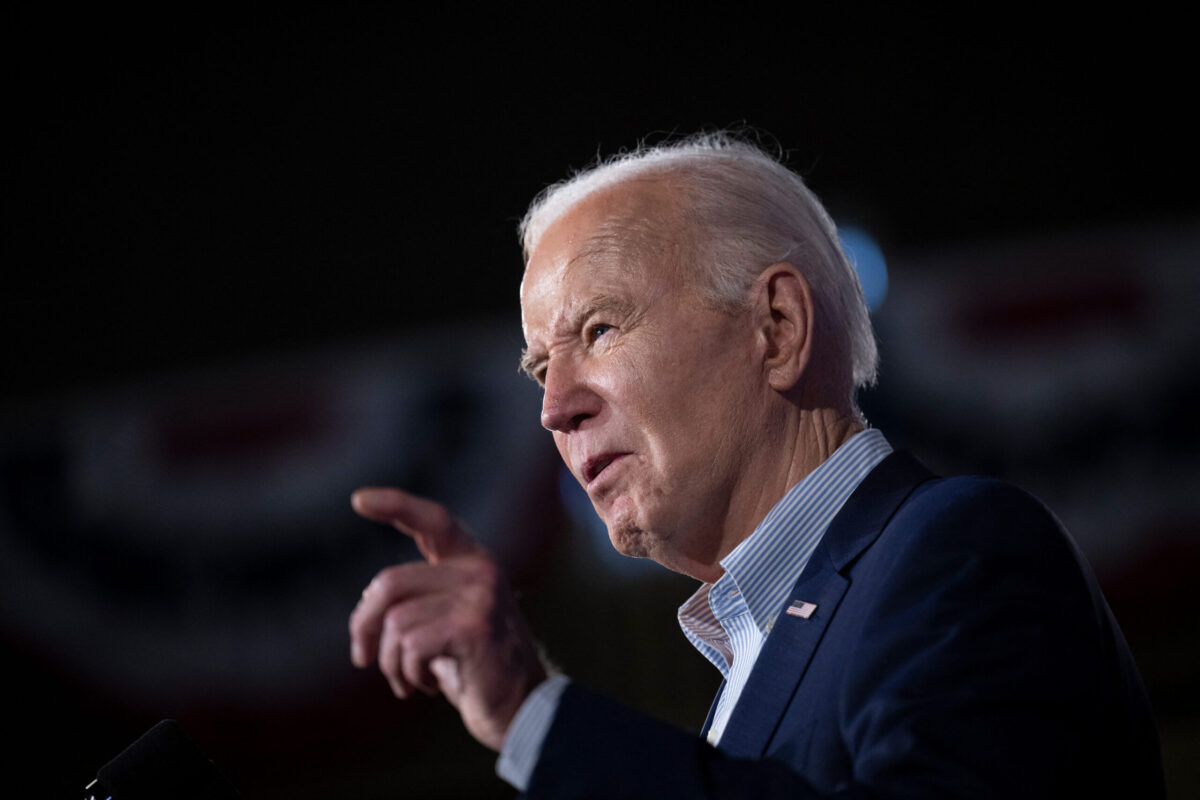US blocks China’s $52B chip funding access with finalized rules.
The Department of Commerce announced on Friday the final funding rules under the CHIPS and Science Act, preventing China from benefiting from the $52 billion incentives and clearing the last hurdle before awarding the $39 billion portion for semiconductor production.
The rules put restrictions on CHIPS funds recipients, preventing them from investing in most semiconductor manufacturing in “foreign countries of concern” for ten years. They are also prohibited from conducting joint research or technology licensing with “foreign entities of concern” on technology or products of national security concern. Additionally, recipients cannot use the incentives to build, modify, or improve a chip facility outside the United States.
Commerce will enforce these ”guardrails” by taking back the entire federal award in case of violations, according to the Department’s press release.
The U.S. definition of “foreign countries of concern” includes China, Russia, North Korea, Iran, and any other countries determined by the Department of State. The Commerce secretary may also add more countries to the list for the purpose of CHIPS funding. Foreign entities of concern include entities owned or controlled by foreign countries of concern and those on the Bureau of Industry and Security’s entity list and the Treasury Department’s Chinese Military-Industrial Complex Companies (NS-CMIC) list.
“One of the Biden-Harris Administration’s top priorities—made possible by the CHIPS and Science Act—is to expand the technological leadership of the U.S. and our allies and partners. These guardrails will protect our national security and help the United States stay ahead for decades to come,” said Secretary of Commerce Gina Raimondo in the press release.
“CHIPS for America is fundamentally a national security initiative, and these guardrails will help ensure companies receiving U.S. Government funds do not undermine our national security as we continue to coordinate with our allies and partners to strengthen global supply chains and enhance our collective security.”
US Chip Production Is Key
Still, U.S. chip production is the key, James Lewis, director of the Technology and Public Policy Program at the Center for Strategic and International Studies think tank, told The Epoch Times.
“They’re intended to keep money from going to China, which was a big congressional concern. Probably unnecessary since companies are increasingly reluctant to invest in China because of business risk but a political requirement,” Mr. Lewis spoke of the “guardrails” released Friday.
“The CHIPS Act will be a success if there are more fabs in the US and US chip production has gone up. So far, there’s been no progress, but it is early days,” he added. “But the US needs to keep in mind these are the only goals that count and speed up implementation.”
“CHIPS is a good idea, but we’ll see if the Administration can pull it off,” he said.
Jeff Ferry, chief economist at the Coalition for a Prosperous America (CPA), agrees that domestic semiconductor production is important and said that Commerce’s latest move was ”a step in the right direction but does not go far enough.” CPA is an advocacy organization representing exclusively manufacturers that have production in the United States.
In particular, he has problems with the definition of “advanced” chips.
“The Biden administration, in partnership with the chip industry, has defined a very narrow segment of the chip industry as ‘advanced,’ and the other 90% of the chip industry as ‘legacy.’ This is a largely fictional differentiation in that you can make advanced products using the latest so-called legacy chips,” Mr. Ferry told The Epoch Times. “Seven, nine, and 12-nanometer chips can do lots of very advanced work.”
The CHIPS funding rules were finalized weeks after China’s Huawei Technologies Co. launched a new smartphone model using a 7-nanometer chip—a milestone of computing power albeit two generations behind the most advanced—on Aug. 29, during Ms. Raimondo’s visit to China.
Mr. Ferry referred to the Huawei breakthrough as a case for broadening the restrictions on technology transfer and equipment sales. “What we need to do is to broaden those restrictions, make it more difficult for them, and at the same time, put the accelerator down on domestic research and development and domestic production,” he said.
Packaging Technology Included
Ms. Dwyer also confirmed at the webinar that semiconductor packaging technology is covered under the expansion restrictions. Packaging stacks chips up to increase computing power. For example, instead of having a 3-nanometer chip, one can stack 7-nanometer chips together to get to a similar level of computing power.
Ray Yang, a semiconductor industry veteran and a director at the Industrial Technology Research Institute (ITRI), an influential think tank in Taiwan, previously told The Epoch Times that controlling advanced packaging technology would be a natural next step for the United States to curb China’s chip ambitions, following sanctions on advanced equipment that would stop Huawei at 7-nanometers.
The Epoch Times has contacted the Department of Commerce for comment.
How do activities that pose a risk to U.S. national security or economic interests influence the designation of countries under the CHIPS and Science Act?
Ountries designated as such by the Secretary of Commerce. This designation is based on an assessment of the country’s involvement in activities that pose a risk to U.S. national security or economic interests.
The CHIPS and Science Act, which was signed into law earlier this year, aims to boost domestic semiconductor production and research in the United States. The $52 billion in funding provided by the Act will help address the global chip shortage and strengthen U.S. competitiveness in the industry.
The final funding rules announced by the Department of Commerce set clear restrictions and guidelines for recipients of the CHIPS funds. By preventing investments in semiconductor manufacturing in “foreign countries of concern” for ten years, the United States aims to protect its semiconductor industry from potential security risks and ensure its technological advantage.
In addition to restricting investments, recipients of the funding are also prohibited from engaging in joint research or technology licensing with “foreign entities of concern” on technology or products that could pose national security concerns. This further strengthens the protection of sensitive technologies and prevents potential leakage or misuse of intellectual property.
Furthermore, the incentives provided by the CHIPS Act cannot be used to build, modify, or improve a chip facility outside the United States. This ensures that the funding directly contributes to enhancing domestic semiconductor production capabilities and helps establish a secure and resilient supply chain within the country.
To enforce these restrictions, the Department of Commerce will have the authority to take back the entire federal award in case of any violations. This demonstrates the seriousness with which the United States views the protection of its semiconductor industry and the measures it is willing to take to safeguard its national security and economic interests.
It is important to note that the definition of “foreign countries of concern” includes not only China but also Russia, North Korea, Iran, and any other countries designated as such by the Secretary of Commerce. This underscores the United States’ commitment to addressing potential threats from various sources and maintaining its technological edge.
The final funding rules under the CHIPS and Science Act mark an important milestone in the United States’ efforts to strengthen its semiconductor industry. By setting clear restrictions and guidelines, the country aims to protect its national security, boost domestic production capabilities, and maintain its global technological leadership in the semiconductor sector.
Call to Action
The final funding rules under the CHIPS and Science Act highlight the United States’ commitment to protecting its semiconductor industry. By preventing China and other countries of concern from benefiting from the funding incentives, the United States aims to safeguard its national security and
" Conservative News Daily does not always share or support the views and opinions expressed here; they are just those of the writer."





